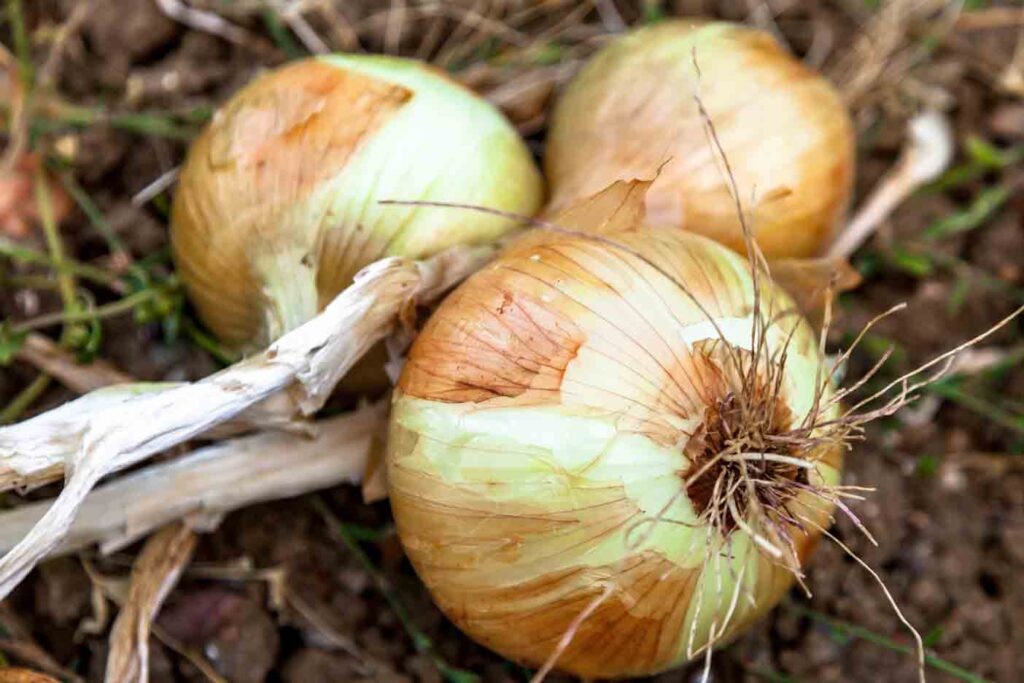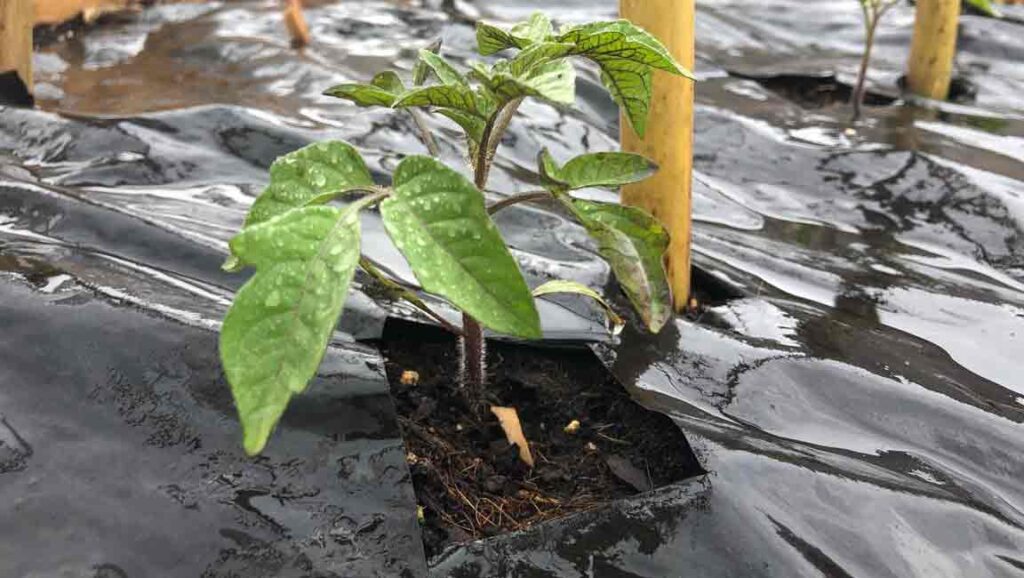We present a brief introduction.

Onions are an essential pillar for world gastronomy, and therefore represent a great product to harvest, whether we choose it as a way of life or as a very enriching hobby.
Onions are one of the most used and versatile vegetables in global gastronomy.
These herbaceous plants belong to the Amaryllidaceae family and are characterized by their bulb, made up of multiple layers of tissue.
With a powerful flavor and high nutritional value, their integration into cuisines is as varied as the cultures that use them.
Onions have a long history dating back more than 5,000 years.
Originally from Central Asia, the ease of developing their cultivation and conservation, in addition to their nutritional and medicinal properties that have been attributed to them since ancient times, spread them across different continents until they became a fundamental ingredient in the most diverse cultures.
When and how to plant onions: Knowing their different types.
Generally onions are classified by their color, into white, yellow and red; each one with its own distinct characteristics of flavor, texture and use.
White onions have a mild and almost sweet flavor, and are ideal for eating raw foods.
Yellow or golden onions are the most common; They are ideal for cooking due to their more robust flavor.
Red onions, for their part, have a perfect balance between sweetness and spiciness, and are used in practically all preparations.
So, before considering when and how to plant onions, we must decide which one we want to grow.
Next, we will look at the difference between these types of onions and what their specific needs are.
Some links of interest on the topic:
https://www.ecologiaverde.com/tipos-de-cebolla-2698.html https://www.infoagro.com/hortalizas/cebolla.htm
When and how to plant onions: Discovering their specific differences.

Despite belonging to the same species, each variety of onions has particularities in its cultivation.
White onions require nitrogen-rich soil and a consistent watering regimen.
Their planting period is in the autumn months and they are harvested in mid-winter.
Yellow onions tolerate lower quality soils better and require less watering than white onions.
Planting is done in autumn or winter and harvested in summer.
Red onions require well-drained soil and should be watered regularly.
Planting is done in spring and harvesting in summer.
Regardless of the variety we decide to grow, it is essential that we take into account its specific requirements.
In this way, we ensure the success of the harvest, and we will produce onions of higher quality and larger size.
When and how to plant onions: Learning to select the most suitable ones according to each climate and its characteristics.
The conditions and influence of the climate on the choice of the variety of onions is key to obtaining the results we want.
For cold climates:
It is advisable to opt for long-day varieties.
For this, yellow onions are suitable.
These require a greater number of hours of light per day to form the bulb, and this is something that we will easily obtain at higher latitudes.
For hot climates:
Let’s choose the short-day varieties.
In this case, white or red onions are the recommended option.
These onions require fewer hours of light to develop the bulb, making them ideal for low latitudes where the days are shorter.
Some links of interest on the topic:
https://jardiniemos.com/cultivos/hortalizas/cultivo-de-cebollas/ https://www.ecologiaverde.com/tipos-de-cebolla-2698.html https://www.infoagro.com/hortalizas/cebolla.htm
When and how to plant onions: Understanding their optimal growing conditions.
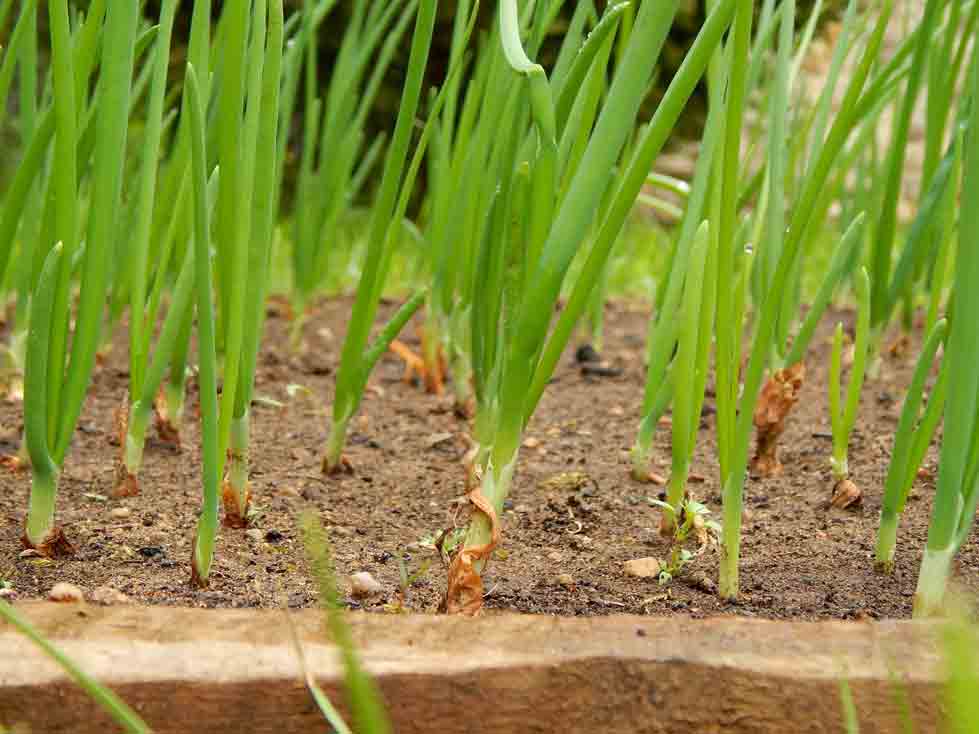
Before venturing into how to plant onions, we must know their growing conditions, to ensure the greatest success in our endeavor.
The cultivation of high-quality onions requires precise knowledge of their growing conditions so that we obtain optimal results.
For this work, both the soil, the climate and irrigation play a fundamental role, and when managed properly, we can make the difference between a successful crop or a poor one.
When and how to plant onions: Choosing the right soil.
Soil type is one of the most crucial aspects we must take into account when growing onions.
This vegetable prefers fertile, well-drained soils with a slightly acidic pH, between 6.0 and 7.0.
Likewise, it is advisable that the soil be rich in organic matter to provide the necessary nutrients to the plants.
If we have doubts, it can be of great help to do a soil analysis to determine the fertility and pH of our land, before proceeding to sow.
When and how to plant onions: Climate and irrigation are key factors.
The climate will also be a crucial factor in the cultivation of our onions, since they like cold and temperate climates from the moment of sowing until their initial development.
Subsequently, bulb formation will take place optimally at warmer temperatures.
Regarding irrigation, onions require a balanced supply of water for their development.
Too much water can cause bulbs to rot, while underwatering can hinder proper growth.
Ideally, we should keep the soil moist but not waterlogged, with more frequent watering during the first weeks of sowing.
For this task, it is of great help to implement cultivation techniques such as ecological mulching, which provides and benefits us in many ways and above all, it will keep our soil moist for much longer and with less water input.
Although growing onions requires careful and constant attention to your environment, this will not be an arduous or impossible task.
Our onions are resistant and grateful vegetables, which, in the right conditions, will generously reward us with abundant harvests of excellent quality.
Some links of interest on the topic:
https://www.mundohuerto.com/cultivos/cebolla/tiempo-crecimiento-cebolla https://blogagricultura.com/clima-suelo-cebolla/ https://egoiplant.com/plantas-y-jardineria/como-crece-la-planta-de-cebolla/
When and how to plant onions: Preparing the land.
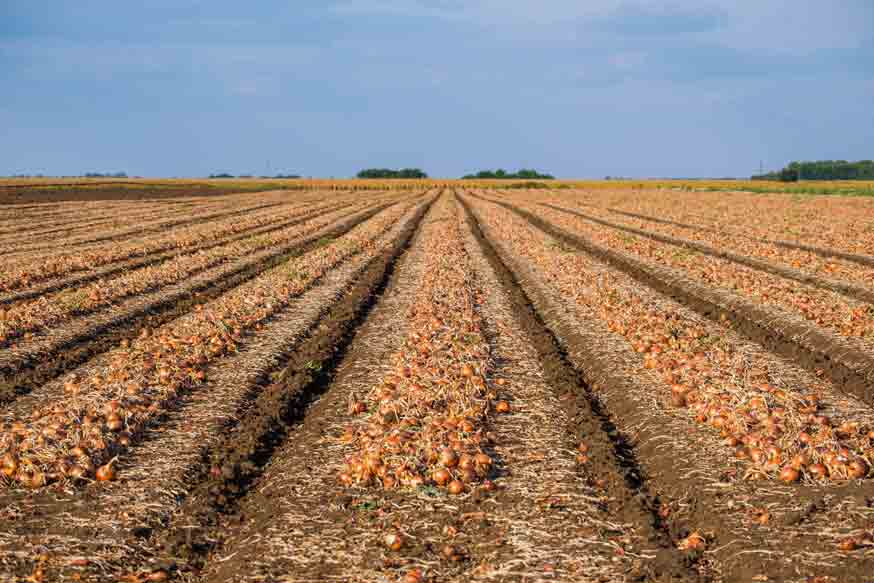
Successful cultivation of onions begins long before planting.
If something can make the difference between an abundant and quality harvest versus a poor one, it is, without a doubt, the meticulous preparation of the land.
The soil is the environment that provides onions with the nutrients and support they need to grow, and that is why its good conditioning for the work it must carry out is so important.
Onions thrive in well-drained soils rich in organic matter and with a slightly acidic pH, preferably between 6.0 and 7.0.
If our soil does not meet these conditions, we can improve its quality by adding compost or well-decomposed manure.
This accentuates the fertility of the soil and improves its ability to retain water without flooding.
Before planting onions, it is crucial to eliminate weeds that could compete for resources with our plants.
Another important point that we must take into account is crop rotation.
If the case allows it, before planting onions it will be very beneficial if our soil has been previously occupied by legumes, as these enrich the soil with nitrogen.
When and how to plant onions: Preparing the planting bed.
Finally, we must prepare the planting bed, creating furrows or rows for the seeds or bulbs of our onions.
In summary, soil preparation represents a crucial stage in growing onions.
Choosing a suitable soil, its correct conditioning and proper preparation for planting are essential steps to guarantee a healthy and productive onion harvest.
Without a doubt, it will be an effort that will be rewarded with the satisfaction of obtaining our own food from the garden we have created.
Some links of interest on the topic:
https://comoplantarfacil.com/hortalizas/como-plantar-cebollas-guia-completa-para-el-huerto/https://huertolia.com/cultivo-de-cebollas-guia-completa/?=
When and how to plant onions: The mulching technique.
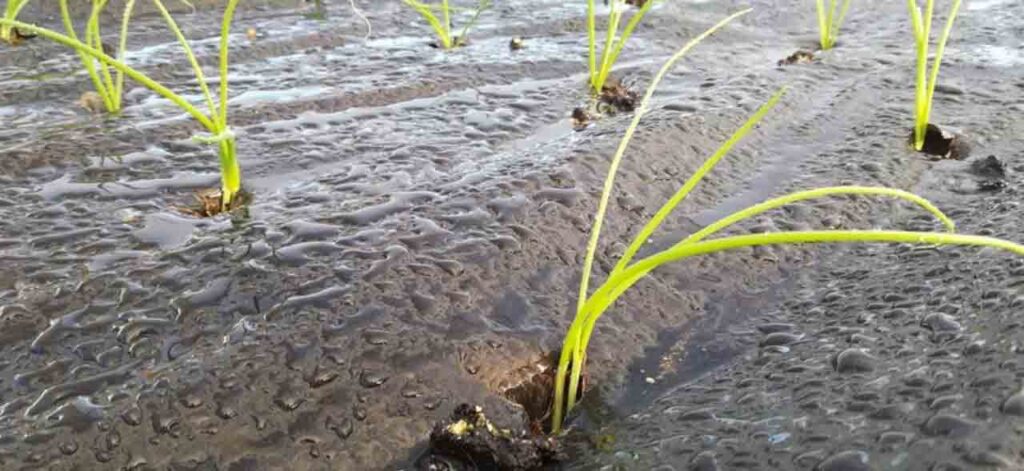
Mulching is a traditional technique used in agriculture and gardening, which generates multiple benefits for the cultivation of our plants.
In the specific case of onions, this practice takes on a particularly relevant role.
In our case, we will talk about NovaMulch biodegradable paper mulch.
The adoption of mulch in the cultivation of onions provides the plants with a series of advantages that facilitate their growth and promote a healthy crop, and as it is ecological and biodegradable, we will not need to collect it once we have harvested our onions.
- Soil temperature control:
- The mulch acts as an insulator, protecting the roots of the onions from extreme variations in temperature, especially in areas with more extreme climates.
- And since it is a paper mulch and not a plastic one, it allows both the soil and the roots to breathe and develop in a more effective and natural way.
- Moisture conservation:
- NovaMulch paper mulch reduces water evaporation from the soil, allowing the moisture needed for optimal onion growth to be maintained.
- And it allows us to optimize the amount of water we will use, significantly saving on irrigation and our costs.
- Weed prevention:
- The presence of weeds can interfere with the proper development of onions.
- Mulching prevents the germination of these plants by limiting their access to sunlight.
- NovaMulch paper mulch is especially effective with the dreaded sedge or cyperus rotundus, since it cannot pierce the paper and cannot continue its development normally.
The correct application of mulch is as crucial as its use, and to be successful, it is essential to choose the right material and apply it correctly.
- Choice of padding material:
- There are many materials that can be used for mulching, including straw, tree bark, compost, plastic, and now also thanks to NovaMulch, eco-friendly paper.
- Mulch should be applied after sowing the onions.
- We must add a 5 centimeter thick layer around the plants, making sure that they do not directly touch the stems.
Mulching is a simple but effective technique that can make a difference in the cultivation of our onions.
By providing plants with a stable and protected environment, optimal conditions are created for healthy growth and a bountiful harvest.
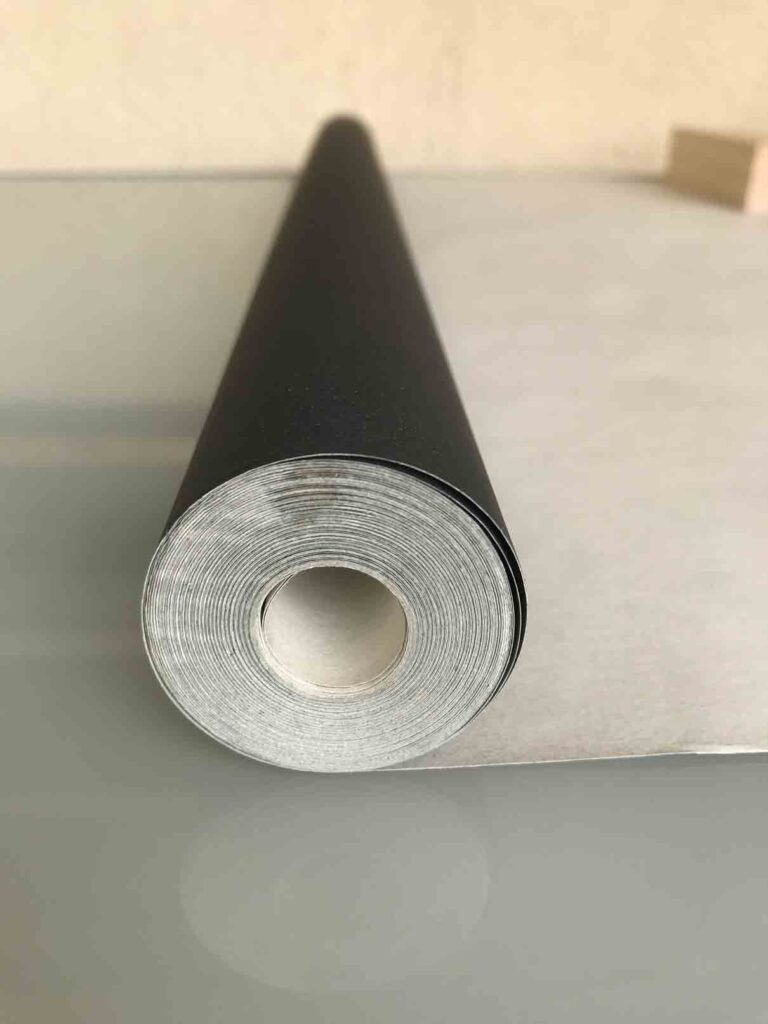
Some links of interest on the topic:
https://www.purplant.es/blog/que-es-el-acolchado/ novamulch.eu
When and how to plant onions: Planting seeds vs. bulbs.
When we decide to plant onions, we will be presented with two paths that will lead us to the same end.
Seeds vs bulbs: advantages and disadvantages.
Seeds are a natural reproduction method and are usually cheaper in cost than bulbs.
They offer a greater variety of options to choose from, and offer us the satisfaction of growing our plants from the beginning.
However, they require more attention and time before plants reach any appreciable size, and are susceptible to diseases and pests.
On the other hand, bulbs are nutrient storage structures that contain a plant in a state of rest.
They are generally more expensive, but offer, on the one hand, the advantage of faster growth, and on the other hand, they will be less susceptible to diseases and pests.
However, the range of plants available is more limited and require suitable storage conditions if they are not to be used immediately.
Tips for planting seeds and bulbs:
Seeds should be planted at the proper depth, usually indicated on the package in which they are stored.
We must keep the soil moist but not soaked, and place the young plants in sufficiently bright spaces to achieve their proper development.
The bulbs are planted with the pointed side up, and at a depth of approximately three times their height.
Let’s make sure that the land is well drained as the bulbs can rot if they remain in stagnant water.
The choice between seeds and bulbs depends largely on each person’s preferences, the budget and time we have to invest in it, and the soil conditions.
No matter which path we choose, both can lead to very rewarding results.
When and how to plant onions: The right time to plant.
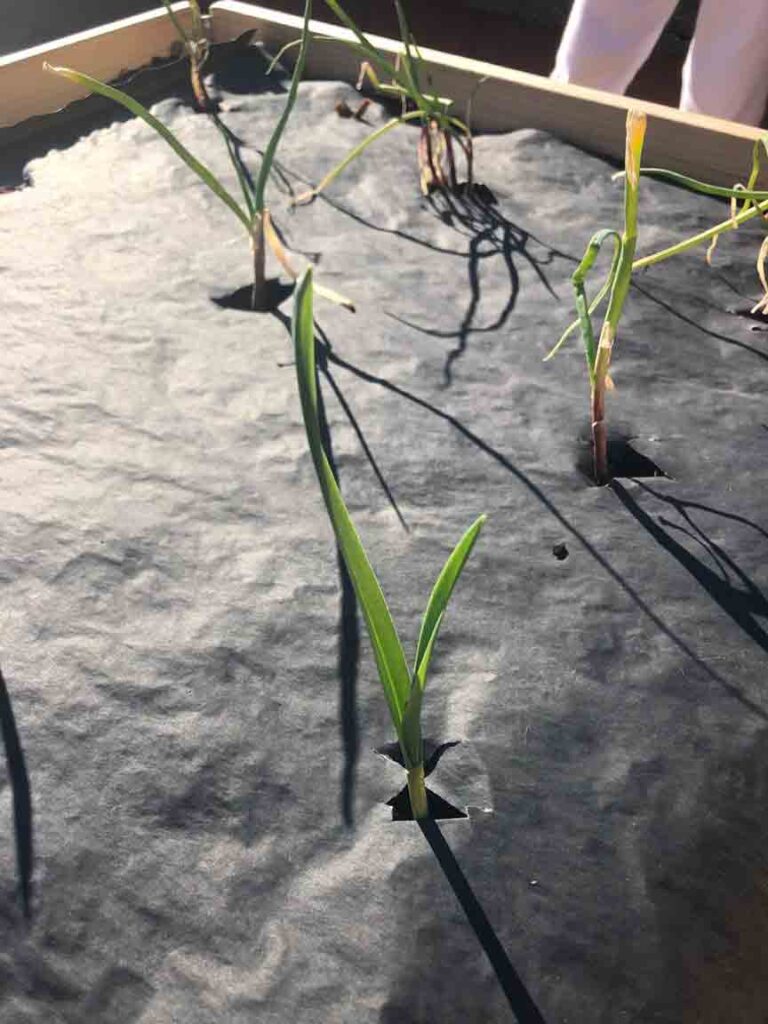
How to plant onions correctly:
The first step towards successful onion cultivation is proper soil preparation.
This should be well tilled and rich in organic matter.
We recommend well-drained soil to avoid waterlogging, with a slightly acidic pH between 6.0 and 7.0.
The stage of sowing onion seeds requires delicacy and permanent attention.
The seeds should be sown in furrows no more than 1 cm deep, separated by about 20 cm to allow for bulb development.
After sowing, it should be lightly covered with soil and watered carefully, avoiding waterlogging.
When is the right time to plant:
La elección del momento para sembrar nuestras cebollas dependerá de la variedad que se decidamos cultivar y el clima de la zona que habitamos.
Generally, onion planting is done in spring, although some short-day varieties can be planted in autumn, for harvest in early summer.
Some links of interest on the topic:
https://www.sistemashorticolasalmeria.com/blog/plantar-cebollas/https://www.ecologiaverde.com/como-plantar-cebollas-2202.html
When and how to plant onions: The appropriate time for watering and the necessary care.
Irrigation has a direct influence on the yield of our planting.
Therefore, proper water management is essential to ensure a healthy and productive crop.
Onions need water, but not too much. Excessive watering can cause rot, while a lack of water will limit its growth.
The optimal time to water onions is early morning or after sunset.
These times of the day favor moisture retention and prevent rapid evaporation of water and water stress of the plants.
In these tasks, padding is of great help to us.
Regarding irrigation methods, the most common is drip irrigation.
This technique allows for uniform and controlled distribution of water, minimizing waste and increasing irrigation efficiency.
On the other hand, prevention and maintenance tasks are essential to prevent diseases and pests.
Crop rotation is a good practice that prevents the accumulation of specific pathogens in soils.
Pest control is essential for a healthy onion crop.
Using organic pesticides, such as garlic or calendula, can help repel harmful insects without causing harm to our ecosystem.
In short, with irrigation adjusted to the specific needs of each crop, and with adequate care, the cultivation of our onions will be a source of satisfaction and benefits, both for its flavor and its nutritional properties.
Some links of interest on the topic:
https://plantasweb.net/riego-de-la-cebolla/ https://www.mundohuerto.com/cultivos/cebolla/riego
When and how to plant onion: The harvest.
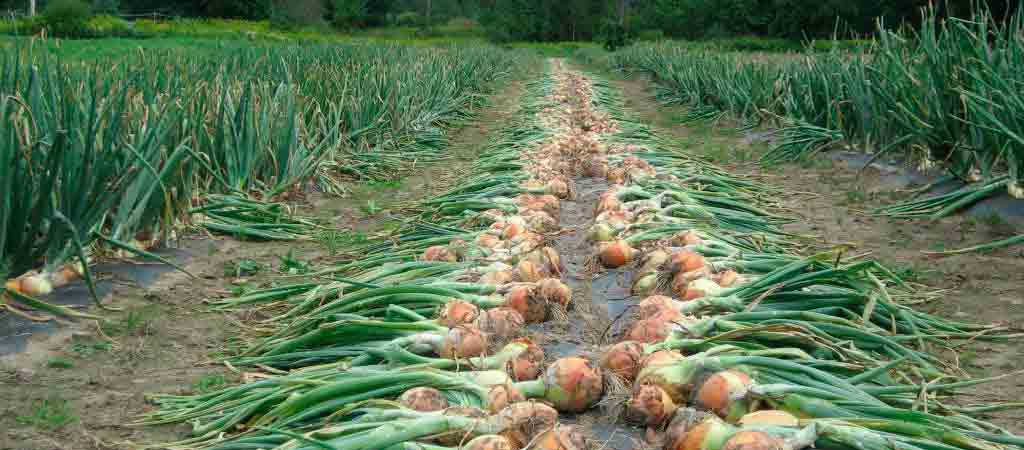
The harvest stage is a crucial moment in the life cycle of onion cultivation, where we reap the fruit of the work and dedication invested.
A correct and timely harvest guarantees not only the optimal quality of the final product, but also the satisfaction of the producer.
Therefore, before starting to harvest onions, it is necessary to consider several important aspects.
How to determine the ideal time to harvest onions: this will be crucial to obtain high-quality crops.
Visual signs of maturity in onions include falling and yellowing leaves, as well as the formation of a hard, shiny outer layer on the bulbs.
Furthermore, the time of harvest is closely related to the life cycle of the onion.
As a general rule, onions are ready to harvest approximately 5 months after each sowing, although this period may vary depending on the variety of plants and growing conditions.
It is essential to prepare in advance and adequately for the onion harvest. The materials we will need will be work gloves, a hand fork and bags or boxes to store the harvested onions.
The harvesting procedure begins by carefully extracting the onions from the ground with the help of a hand fork, avoiding damaging the bulbs.
The onions should then be placed in a ventilated and shaded place to dry, which usually takes between one and two weeks.
At this point, if we have used a mulch system such as NovaMulch’s biodegradable paper, we will only have to shred the paper with the plant remains and integrate them into the soil so that we will soon see how they have disappeared, degrading completely.
In short, to embark on this wonderful journey of when and how to plant onions , we must make a detailed plan in advance of all the steps we have described here, studying our climate, choosing the appropriate seeds or bulbs that adapt to our spaces, transplanting at the right time and in the right size, defining the terrain, drainage and mulch carefully, and carefully following the care and harvesting according to the plan we have drawn up.

